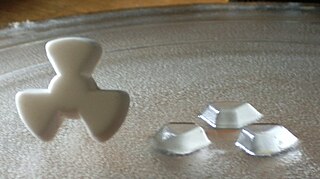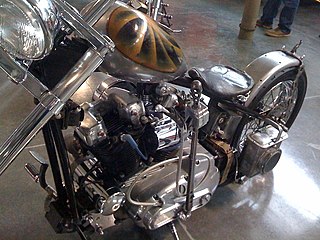 W
WA clutch is a mechanical device that engages and disengages power transmission, especially from a drive shaft to a driven shaft. The clutch acts as a mechanical linkage between the engine and transmission; and briefly disconnects, or separates the engine from the drivetrain, and therefore the drive wheels, whenever the pedal is depressed, allowing the driver to smoothly change gears.
 W
WA centrifugal clutch is an automatic clutch that uses centrifugal force to operate. The output shaft is disengaged at low rotational speed and engages more as speed increases. It is often used in mopeds, underbones, lawn mowers, go-karts, chainsaws, mini bikes, and some paramotors and boats to keep the engine from stalling when the output shaft is slowed or stopped abruptly, and to remove load when starting and idling. It has been superseded for automotive applications by the fluid coupling.
 W
WA cone clutch serves the same purpose as a disk or plate clutch. However, instead of mating two spinning disks, the cone clutch uses two conical surfaces to transmit torque by friction.
 W
WA dog clutch is a type of clutch that couples two rotating shafts or other rotating components not by friction but by interference or clearance fit. The two parts of the clutch are designed such that one will push the other, causing both to rotate at the same speed and will never slip.
 W
WA clutch is a mechanical device that engages and disengages power transmission, especially from a drive shaft to a driven shaft. The clutch acts as a mechanical linkage between the engine and transmission; and briefly disconnects, or separates the engine from the drivetrain, and therefore the drive wheels, whenever the pedal is depressed, allowing the driver to smoothly change gears.
 W
WA fan clutch is a thermostatic engine cooling fan that can freewheel at low temperatures when cooling is not needed, allowing the engine to warm up faster, relieving unnecessary load on the engine. As temperatures increase, the clutch engages so that the fan is driven by engine power and moves air to cool the engine.
 W
WIn mechanical or automotive engineering, a freewheel or overrunning clutch is a device in a transmission that disengages the driveshaft from the driven shaft when the driven shaft rotates faster than the driveshaft. An overdrive is sometimes mistakenly called a freewheel, but is otherwise unrelated.
 W
WA clutch is a mechanical device that engages and disengages power transmission, especially from a drive shaft to a driven shaft. The clutch acts as a mechanical linkage between the engine and transmission; and briefly disconnects, or separates the engine from the drivetrain, and therefore the drive wheels, whenever the pedal is depressed, allowing the driver to smoothly change gears.
 W
WThe Hele-Shaw clutch was an early form of multi-plate wet clutch, in use around 1900. It was named after its inventor, Professor Henry Selby Hele-Shaw, who was noted for his work in viscosity and flows through small gaps between parallel plates. The clutch was innovative in not relying upon friction, as other clutches did.
 W
WA clutch is a mechanical device that engages and disengages power transmission, especially from a drive shaft to a driven shaft. The clutch acts as a mechanical linkage between the engine and transmission; and briefly disconnects, or separates the engine from the drivetrain, and therefore the drive wheels, whenever the pedal is depressed, allowing the driver to smoothly change gears.
 W
WSaxomat was a type of automatic clutch available as an option on Fiat 1800, Lancia Flaminia, Saab 93, Borgward Isabella, Goliath/Hansa 1100, Auto Union 1000, Ford Taunus, Trabant, other than some models from BMW, Opel, Steyr-Puch, NSU, Glas, Wartburg and Volkswagen. Opel sold it as Olymat; Trabant and Wartburg named the system Hycomat. The Hydrak, used in some Mercedes-Benz vehicles between 1957 and 1961, was a similar system with a hydrodynamic torque converter in place of the Saxomat's centrifugal clutch, this H.T.C. system was standard on NSU Ro 80 and was optional on the Porsche 911 (Sportomatic). The system also reappeared in the 1990s as Saab Sensonic, but Saab shelved that technology since 1998. Hyundai also reintroduced similar concept as the Intelligent Manual Transmission (iMT) in 2020 with the latest generation Hyundai i20.
 W
WA sprag clutch is a one-way freewheel clutch. It resembles a roller bearing but, instead of cylindrical rollers, non-revolving asymmetric figure-eight shaped sprags, or other elements allowing single direction rotation, are used. When the unit rotates in one direction the rollers slip or free-wheel, but when a torque is applied in the opposite direction, the sprags tilt slightly, producing a wedging action and binding because of friction. The sprags are spring-loaded on their pivots to ensure that they lock with very little backlash once drive is engaged.
 W
WThe terms suicide clutch, and suicide shifter or jockey shifter, refer to a motorcycle's foot-operated clutch and hand shifter to change gears, Foot clutches (rocker-clutches) and hand shifters (tank-shifts) were found on early motorcycle designs from around the turn of the 20th Century to the 1940s or 50s, and reappearing on modern retro styled custom motorcycles and choppers. Modern motorcycles do not require removing a hand from the handlebars to shift gears, using only the fingers for the clutch and the toes of one foot to select gears. In contrast, the fanciful slang "suicide" was applied to designs where the rider removes one hand to change gears, or cannot put both feet on the ground while using a foot clutch to disengage the transmission. Sometimes the shifter is referred to as a "jockey shifter" while the foot clutch is called a "suicide clutch".
 W
WA viscous coupling is a mechanical device which transfers torque and rotation by the medium of a viscous fluid.
 W
WA clutch is a mechanical device that engages and disengages power transmission, especially from a drive shaft to a driven shaft. The clutch acts as a mechanical linkage between the engine and transmission; and briefly disconnects, or separates the engine from the drivetrain, and therefore the drive wheels, whenever the pedal is depressed, allowing the driver to smoothly change gears.